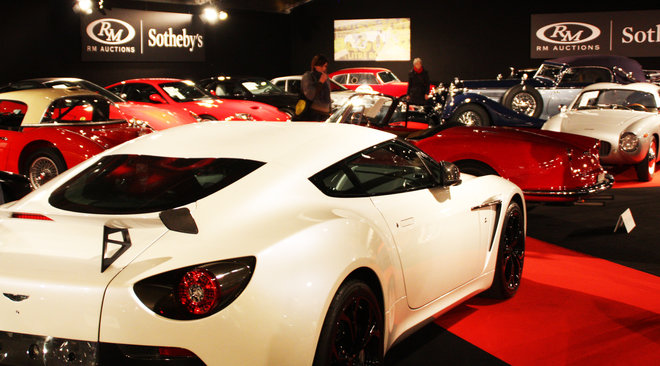Luxury car auctions: Classic car collectors favour modern day editions from Mercedes, Ferrari and Aston Martin
Do classic cars necessarily have to be from the 50s, 60s or 70s? We explore the shift in the very definition of what a classic car was to what it now is

The collectible classic car industry has long been one that gets your heart pumping. With the prospect of collecting an item so elusive you’re one of the few ‘lucky ones’ to obtain, classic car connoisseurs are known for their deep passion in the industry. Despite talk of bubbles, and of Ferrari fatigue, the classic car market is in extremely good health as 2016 becomes 2017. Yet, we ask ourselves what makes a car collectible? The very definition of what makes a car collectable or desirable is changing faster than a classic Ferrari’s 0-100km/h time.
On the whole the market has remained very strong,” begins RM Sotheby’s Peter Haynes. “Probably the thing that came out of 2016 most clearly is a shift towards what the industry is calling the modern classic.” By modern, Haynes says that interest in automotive exotica from the late 80s and 90s is now huge. “It’s really hard to account for this change unless what we’re seeing is the beginning of a sustained shift in the market — the passing of one generation and a new generation of buyers coming in,” he says.
As a rule, collectors that buy with their heart rather than as an alternative to a hedge fund, will be drawn to those cars that have a personal, emotional significance.
“People are buying the cars they want to buy,” explains Robert Johnson, director of Classic and Sports Finance, a company that helps collectors track down and pay for exotic cars, whether at auction or through dealers. “It’s a case of what do I really want? What do I aspire to and what was on my bedroom wall as a kid?”
And in the 80s and 90s, bedroom walls were covered in pictures of the Lamborghini Countach, Ferrari Testarossa, Porsche 959 and the Porsche 911 Turbo. Over the past 12 months, prices for all of these models, and their successors have started climbing. At the RM Sotheby’s Paris sale on February 7, a 1988 Porsche 959 Sport went for a world record €1.96 million, but a 1995 Porsche 911 Turbo Cabriolet attracted a winning bid of €1.34 million.
And the auction houses are now changing the mix of lots on offer to cater for this changing taste. “A few years ago, it was very rare to find an auction house selling a new car,” points out Haynes.
Yet at this year’s Paris sale, some of the biggest lots were also the newest. A 2014 Mercedes SLS AMG Black Series went for €470,000, a 2011 Ferrari 599 GTO for €450,000, a 2012 Aston Martin V12 Zagato fetched €750,400 and a 2016 Porsche 911R went for €515,200. These prices point to a second growing trend in the collector car space. The investors that would normally be buying up mid-1960s Ferraris are now looking to rare modern cars instead.
“A lot of people are now sniffing these cars out rather than going to classic car auctions,” points out Haynes. And at the moment there is no shortage of choice. McLaren, Ferrari, Porsche and Lamborghini have all unveiled extremely rare, extremely expensive models over the past 12 months, from the Ferrari J50, to the aforementioned Porsche 911 R and the Lamborghini Centenario.
But in each case, the entire run has sold out before the first example has been built. “People are going to start clambering over each other to buy them,” says Haynes, who believes the cars will be stored for resale and never driven.
However, it could also be good news for everyone else. Some of the most desirable traditional classics, could soon be within more collectors’ reach. A 1973 Alfa Romeo Montreal sold for just €78,400 at the Paris sale, a Maserati Bora for just €179,200 and a 1970 Ferrari Dino 246 GT L Series for €448,000 — that’s less than a 2016 Porsche or a 2012 Aston Martin.



